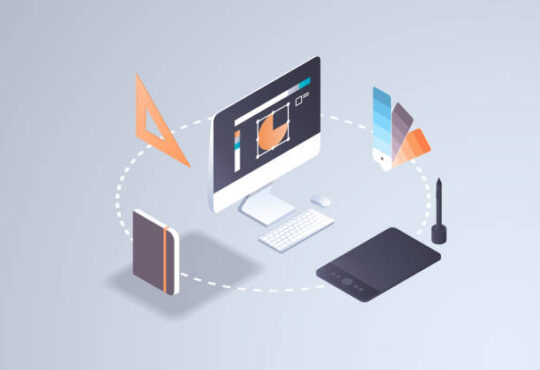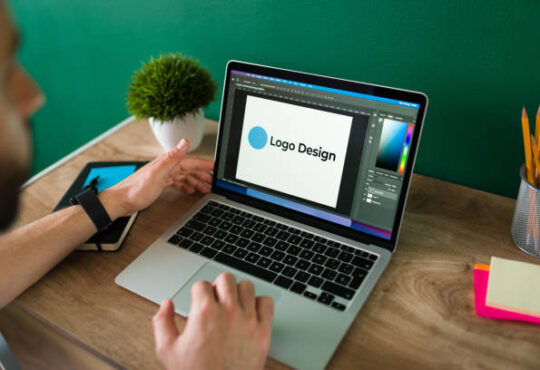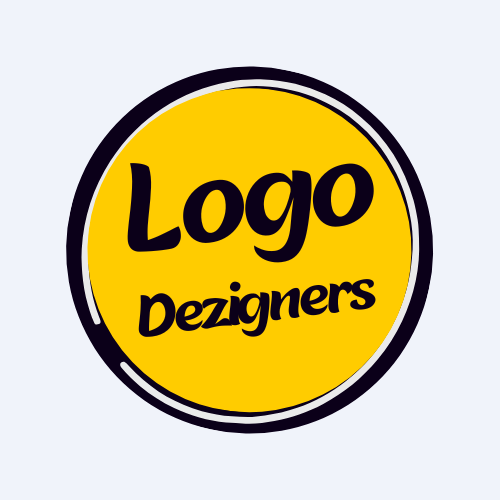
What are the tips for a great tech company logo design?
Welcome to our blog post on the consequences of copying a brand’s logo, design or any other element without proper authorization. Whether you are a small business owner creating your own branding materials or an individual looking to use someone else’s design for personal gain, it is crucial to understand the potential implications of such actions. In this digital age where information and visuals can be easily shared and accessed, the lines between inspiration and plagiarism can often become blurred. As consumers become increasingly aware of their rights as well as brands’ efforts in protecting their intellectual property, it is essential to delve into this topic with both legal and moral considerations in mind. So let us dive deeper into what happens if we copy a logo, design or anything belonging to a brand without their permission.
The audience for this blog post could range from individuals who enjoy designing as a hobby to small business owners trying to establish themselves in the competitive market. This blog post aims to address those who may have questions about using elements from existing brands but are unsure about the repercussions of such actions.
Also Read: What happens if I copy a logo, design or anything of a brand?
Our tone throughout this piece will be informative yet thought-provoking as we explore the various aspects that come into play when dealing with copyright laws and infringements. We hope that by shedding light on these issues, readers will not only understand what constitutes infringement but also learn how they can protect their own creative work while respecting others’. So grab your favorite cup of coffee/tea (whichever you prefer), get comfortable and join us on this journey through understanding the effects of copying something belonging to another brand.
II. Understand Your Brand
To truly understand a tech company’s brand, it’s essential to define the core values and mission that guide all of its decisions and actions. These foundational elements set the tone for the entire organization and play a vital role in shaping its reputation and identity. In addition to knowing what your company stands for, it’s equally important to identify your target audience and market. Who are they? What are their needs and pain points? By understanding these crucial details, you can create marketing messages and strategies that resonate with your target customers and help your business achieve its goals. Overall, taking the time to understand your brand is a critical step in building a successful and sustainable tech company.
III. Research Competitors
In order to stay ahead of the game in the tech industry, it’s important to research and analyze the competition. One way to do this is to closely examine the logos of successful tech companies and identify design trends and elements that resonate with the industry. By studying the logos of other companies, you can gain insight into what works and what doesn’t, and incorporate those findings into your own branding and design. It’s all about staying up-to-date with the latest trends and constantly evolving to meet the demands of the constantly changing tech landscape.
IV. Simplicity is Key
In the world of logo design, simplicity is key, and for good reason. A clean and straightforward logo not only grabs attention more effectively, but it also has the added benefit of being easier to remember. When it comes to tech logos, this principle becomes even more crucial. Brands like Apple, Google, and Microsoft have all flourished largely due to the simplicity of their logos. By stripping away unnecessary elements and relying on simple designs, these companies have created logos that have become synonymous with their products. These logos not only look great on promotional materials, but they also work well on digital platforms such as mobile devices and social media. When it comes to modern logo design, embracing simplicity is a proven key to success.
V. Versatility
The significance of a versatile logo cannot be overstated in today’s digital age. With the vast number of platforms that businesses must consider, from social media to mobile apps, a logo that can adapt and remain recognizable is essential. A versatile logo can easily be resized, reformatted, and tailored to suit different digital and print channels, while still retaining its design integrity. Achieving this level of scalability requires careful consideration of the logo’s design elements, such as color, font, and spacing. To ensure your logo remains versatile, it’s important to keep these elements consistent across all variations of the logo, while also considering the platform-specific features that may impact the logo’s appearance, such as screen dimensions or resolution. With a well-designed, versatile logo, your brand will thrive across all platforms, no matter where your audience encounters it.
VI. Unique Identity
In the ever-evolving tech industry, standing out from the crowd is essential. A unique identity is crucial to making a lasting impact on potential customers and clients. When it comes to designing a logo for a tech company, creativity is key. It’s important to avoid clichés and generic symbols that have been used countless times before. Instead, focus on creating something that is truly one-of-a-kind and representative of your brand. A standout logo can be the difference between being lost in the sea of tech competitors and being instantly recognizable. So go ahead and let those creative juices flow to design a logo that will set your company apart from the rest.
VII. Color Psychology
Color psychology is a captivating field that delves deeply into how the colors we encounter can impact our perception. It’s amazing to think that something as simple as a hue or shade can influence our emotions, thoughts, and even behavior. Companies that are aware of this fact can use colors strategically to convey their brand values and connect with their target audience in a meaningful way. Rather than simply choosing a color palette based on aesthetics, businesses should consider which colors align best with their industry and what they want to communicate to their customers. Crafting a consistent and deliberate color scheme can bolster a company’s brand recognition and reputation.
VIII. Font Selection
Selecting the right font for a tech company logo can make all the difference in creating a strong and recognizable brand identity. The font chosen should not only complement the company’s aesthetic, but also communicate the brand’s values and vision effectively. From sleek and modern sans-serif options like Helvetica and Futura to more unique and stylized choices like Proxima Nova and Brandon Grotesque, there are endless possibilities for finding the perfect font. Additionally, incorporating custom typography can add an extra level of creativity and originality to a tech company’s branding. By taking font selection seriously, a tech company can create a logo that truly stands out and represents their brand in the most effective way possible.
Also Read: Why can’t I get ideas on designing a logo? What should I do? 2024
IX. Test and Iterate
As you begin the final stages of designing your logo, it is crucial to remember the importance of testing. Your logo will not only appear on your website and social media accounts, but it will also be used on business cards, flyers, and even billboards. Testing across different mediums will help ensure that your logo looks sharp and professional no matter where it’s displayed. Additionally, remember to encourage feedback from colleagues, friends, and even potential customers. Constructive criticism can be used to iterate and improve your logo so that it fully represents your brand and speaks to your audience. Don’t be afraid to make changes and try new things – your logo is the heart of your brand, and it’s worth the effort to make it stand out.
X. Seek Professional Help
Investing in professional logo design services can be a game-changer for your business. While it may be tempting to design your own logo or use a generic template, the benefits of working with a professional designer are worth the investment. A professional designer can bring a fresh perspective to your brand and create a logo that truly represents your business. They have the expertise to create a logo that is not only visually appealing, but also communicates your brand’s values and mission. Don’t wait until your logo needs a total overhaul – consider hiring a professional designer from the start to set your business up for success.
XI. Case Studies
In today’s fast-paced and highly competitive tech industry, logo design can make or break a company’s success. That’s why it’s important to analyze the journeys of successful tech companies and learn from their logo design strategies. By examining companies like Apple, Nike, and Google, we can see how a simple logo can become an iconic symbol that represents a brand’s values, mission, and uniqueness. Whether it’s elegance, simplicity, or innovation, a logo should be a reflection of everything a company stands for. Through case studies and real-world examples, we can gain valuable insights into the logo design process and discover the key principles that make a logo successful.
XII. Conclusion
In the highly competitive tech industry, having a well-designed logo could be the determining factor for success or failure. A memorable logo not only catches the eye of potential customers but also leaves a lasting impression on their minds. So, what makes a great tech company logo design? It’s not just about the visual appeal, but it also needs to convey the essence of your brand and be easily recognizable. Keep it simple, use appropriate colors, and make it scalable to fit any medium. A well-designed logo has the power to embody your brand’s vision and values, establish trust with customers, and elevate brand recognition. In short, invest time and effort into designing your logo as it’s an investment in your brand’s future.





